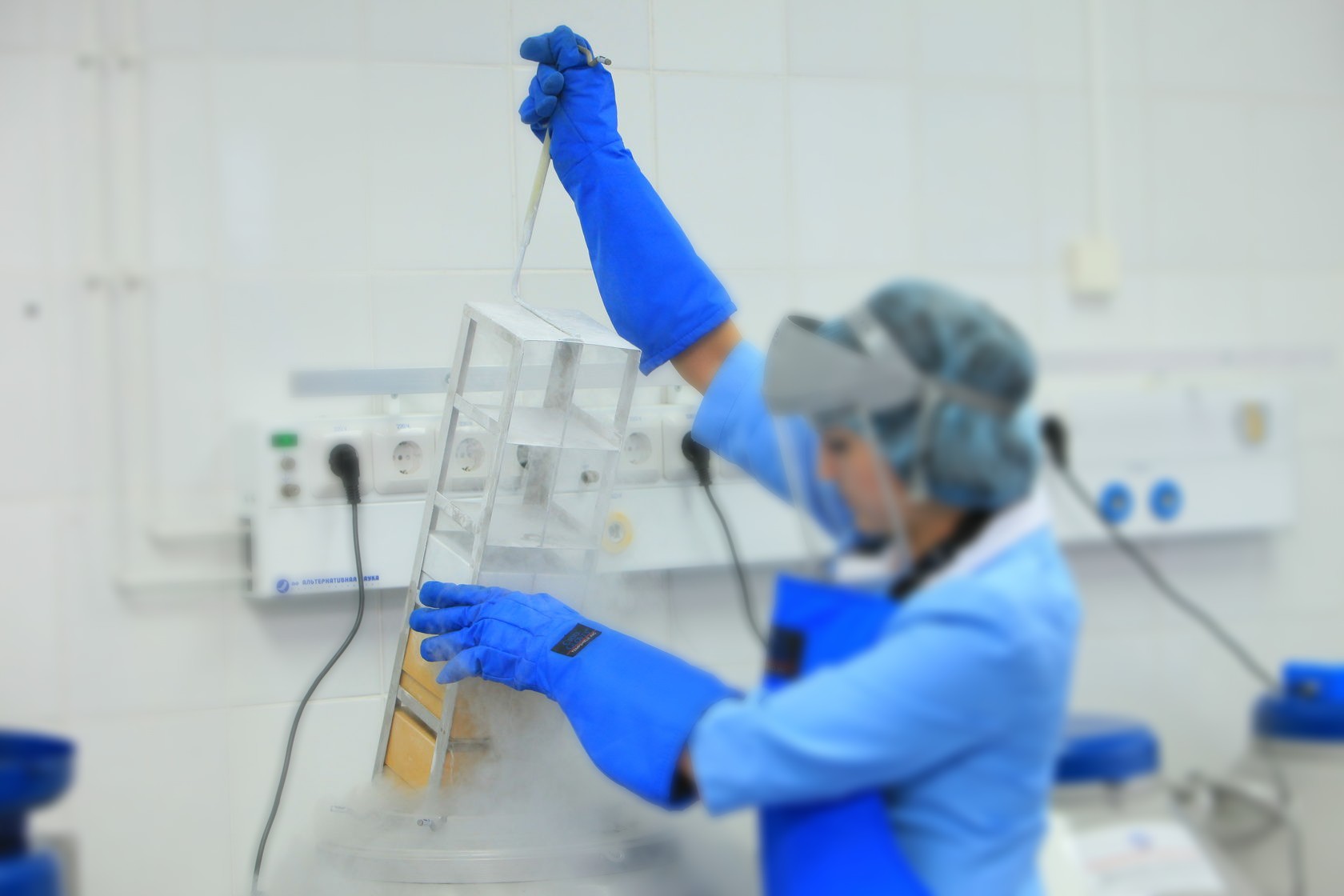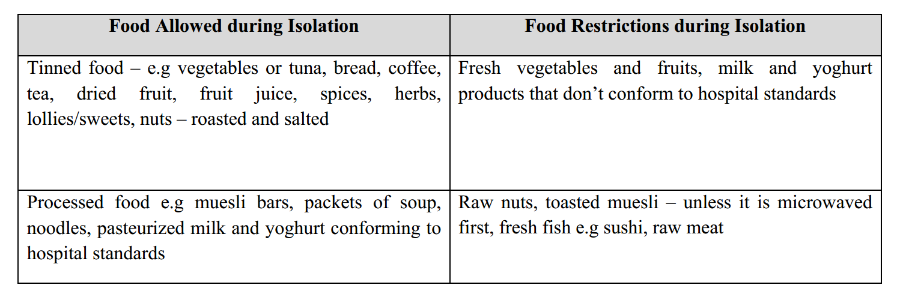
Don't hesitate to contact
We are looking forward to justify your confidence
You will receive a letter on the specified e-mail
Department of Hematology and Cellular Therapy
STAGES
OF
TREATMENT
OF
TREATMENT
(AHSCT)
Department of bone marrow transplantation is equipped in accordance with international standards:
- Aseptic boxes — separate chambers equipped with special air and water purification systems designed for bone marrow transplantation in a wide range of diseases (lymphomas, myeloma, leukemias, lymphogranulomatosis, etc.), treatment of patients with severe immune system disorders, which reduce the risk of infectious contamination patient with microorganisms.
- The water and air purification systems installed in the department of bone marrow and stem cell transplantation ensure a constant supply of sterile air and water and are an integral part of aseptic boxes
- Cytapheresis systems — high-technology devices for collecting stem hemopoietic cells, red blood cells and other blood elements necessary for bone marrow and stem cell transplantation in a wide range of diseases.
Duration of stages
Day 1-5
Day 6-7
Day 6-7
Day 8-12
Day 8-12
Day 13
Day 13
Day 14-27
Day 28
Day 28
Day 29 - 365
1
Stem cells stimulation
Stem cells stimulation - 4 days (sometimes 5-6 days, depending on the results of stem cell collection).
Granulocyte-colony stimulating factor (G-CSF) 10 µg/kg.b.w./day
(2 subcutaneous injections 11 pm and 3 am) in combination with steroid infusion (Methylprednisolone 500 mg) at 10am-11am (200 ml liquid for 20-40 min intravenous infusion).
Also patient takes one antacid pill twice a day 30 mins before food (before breakfast and before dinner).
Granulocyte-colony stimulating factor (G-CSF) 10 µg/kg.b.w./day
(2 subcutaneous injections 11 pm and 3 am) in combination with steroid infusion (Methylprednisolone 500 mg) at 10am-11am (200 ml liquid for 20-40 min intravenous infusion).
Also patient takes one antacid pill twice a day 30 mins before food (before breakfast and before dinner).
2
3
Harvesting of stem cells
Collection of stem cells (1-3 days).
To rebuild immune system, we need to collect more than 2 million hematopoietic stem cells per kg of body weight (>2 x 106/kg/b.w. CD34+ HSC).
Stem cells collection (harvesting) takes 5-6 hours (7-8 am – 1-2 pm).
Autologous stem cell harvesting is performed by Haemonetics MCS+ multicomponent collections system or Spectra Optia Apheresis System.
To rebuild immune system, we need to collect more than 2 million hematopoietic stem cells per kg of body weight (>2 x 106/kg/b.w. CD34+ HSC).
Stem cells collection (harvesting) takes 5-6 hours (7-8 am – 1-2 pm).
Autologous stem cell harvesting is performed by Haemonetics MCS+ multicomponent collections system or Spectra Optia Apheresis System.
4
5
Chemotherapy
Chemotherapy passes within 4 days
+ 1 for vacation
+ 1 for vacation
Chemotherapy
The main morning infusion of Cyclophosphamide with supportive medicine and hydration (3 L of normal saline) takes 3 h (usually 10 am – 1 pm).
Second and third infusions (mesna uroprotection, nausea prophylaxis)
– in 4 and 8 hours after the first one.
From 1 st day of chemotherapy we start antiviral,
antibacterial and antifungal prophylaxis:
Second and third infusions (mesna uroprotection, nausea prophylaxis)
– in 4 and 8 hours after the first one.
From 1 st day of chemotherapy we start antiviral,
antibacterial and antifungal prophylaxis:
- Ciprofloxacin 1000 mg/d
- Fluconazole 200 mg/d
- Aciclovire 1200 mg/d
- Co-trimoxazole (Bactrim) 960 mg/d
TRANSPLANTATION DAY
- After finishing chemotherapy, we start stem cell infusion at 1pm and finish at 3 pm.
- We recommend not to have meals after midday (12 pm), you can drink as much as you want.
- We remove the cryopreservation bags individually from liquid nitrogen and place them immediately in the water bath and thaw it.
- When thawed (-2-3 minutes), we infuse it as quickly as possible

- Together with stem cells, we give fluids (3-4 L of saline), antihistamine, steroids and other symptomatic medications as needed.
- Also, we monitor heart rate (ECG), blood pressure, respirations, body temperature.
- Another side effects are pungent/tomato taste and smell, red-stained urine.
- We ask to urinate in special bag to assess a color of urine after stem cell reinfusion.
| Side effects |
6
Isolation period
- Patient should never leave the room.
- Patient should keep the door clos will clean the room every day.
- Patient's suitcases will be removed.
- Patient should heat up food (approx. 10-20 seconds) in the microwave before consuming.
- Patient should use a special for mouthwash (mix half of cup of red solution with cap of water).
- Patient should use provided chlorhexidine solutions for washing body – alcohol-containing for legs/arms/body, water-based - for genital area and head.
- Our staff will change bedding and wash clothing every day
Rehabilitation of immunne system
A patient must inform medical staff immediately of any problems or changes in condition.
We monitor blood pressure, heart rate, body temperature 3 times a day.
Patient usually has supportive infusions – natrium saline, electrolytes, low-dose dexamethasone twice a day, G CSF (subcutaneous shot, once a day at 3 pm) to decrease length of neutropenic phase.
Additionally, we can use intravenous antibacterial, antivirus, antifungal medications when needed.
We provide blood component transfusion when hemoglobin or platelet level is too low (Hb<80 g/L, Plt< 20 x 109/L).
Patient has 5h Rituximab infusion on D+10-D+12.
Patient usually has supportive infusions – natrium saline, electrolytes, low-dose dexamethasone twice a day, G CSF (subcutaneous shot, once a day at 3 pm) to decrease length of neutropenic phase.
Additionally, we can use intravenous antibacterial, antivirus, antifungal medications when needed.
We provide blood component transfusion when hemoglobin or platelet level is too low (Hb<80 g/L, Plt< 20 x 109/L).
Patient has 5h Rituximab infusion on D+10-D+12.

